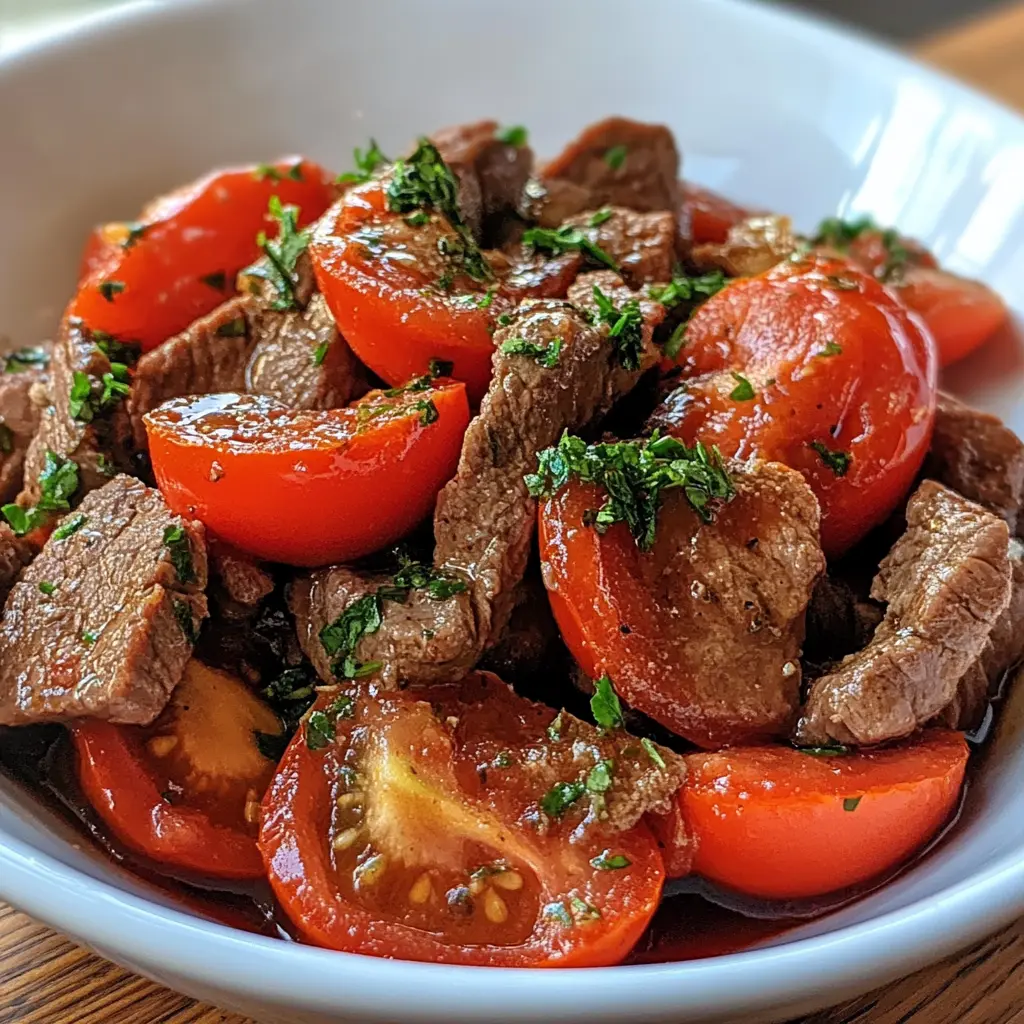If you’re craving a sweet, creamy, and refreshing treat that screams summer in every bite, then strawberry sago might just be your new obsession. This delightfully chewy and fruity dessert has taken over Southeast Asian kitchens and is now making waves across the globe — and for good reason. Made with soft sago pearls, vibrant strawberries, and rich coconut or dairy milk, it’s the ultimate combination of flavor, texture, and pure indulgence.
Table of Contents
Introduction to Strawberry Sago
Strawberry sago is a creamy dessert made with translucent tapioca pearls (commonly called sago), fresh or pureed strawberries, and a sweetened milk base, often coconut milk. This dessert is chilled and served cold, making it a popular choice in tropical and summer seasons. It’s not only tasty but visually stunning — its pinkish hue, glossy pearls, and creamy texture make it totally Instagram-worthy.
Unlike traditional Western puddings, strawberry sago offers a unique textural experience — a soft bite from the sago pearls, a burst of fruitiness from the strawberries, and a rich creaminess from the milk blend.
Key Ingredients that Make Strawberry Sago a Flavor Bomb
Main Ingredients: Sago Pearls, Strawberries, and Coconut Milk
Every mouthwatering bite of strawberry sago starts with just a few star ingredients that pack a punch when combined the right way. Here’s a closer look at what goes into creating this creamy, fruity masterpiece:
1. Sago Pearls (Tapioca Pearls)
These are small, white pearls that become translucent and chewy once boiled. You can find them in most Asian grocery stores or online. They’re the textural foundation of the dish and offer that beloved bouncy, jelly-like feel.
Pro Tip: Use medium-sized white sago for a better texture-to-liquid ratio.
2. Strawberries (Fresh or Frozen)
The heart of the flavor. Fresh strawberries are best, especially when in season, but frozen berries work just as well after thawing and blending. You can use them whole, chopped, or pureed depending on your texture preference.
Want a smoother finish? Go for pureed strawberries with a hint of sugar and lemon juice.
3. Coconut Milk or Evaporated Milk
This creamy base ties everything together. For a tropical vibe and dairy-free option, full-fat coconut milk is a winner. For a richer taste, you can use evaporated milk or even condensed milk (if you love that extra sweetness).
Blend coconut milk with a touch of vanilla or pandan essence for a heavenly twist.

Optional Add-ons to Enhance Flavor and Texture
While the classic strawberry sago is fantastic on its own, you can easily elevate the flavor and presentation with some creative additions:
| Add-On | Why Use It |
|---|---|
| Chia Seeds | Adds nutrition & crunch |
| Basil Seeds (Sabja) | Enhances visual appeal & digestion |
| Mint Leaves | Freshens the palate |
| Honey or Maple Syrup | Natural sweetener alternatives |
| Gelatin Cubes | Adds structure and bounce |
| Crushed Ice | Makes it ultra-refreshing |
You can also play with textures by layering it parfait-style with crushed graham crackers or granola.
Whether you’re going traditional or experimenting with modern twists, starting with the right ingredients makes all the difference.
Discover great ideas like Angel Eggs Recipe – The Heavenly Twist while you prep your strawberry sago.
How to Make Strawberry Sago at Home – Step-by-Step Guide
Preparing the Sago: Soaking and Cooking Techniques
Cooking sago pearls the right way is key to nailing the texture of your strawberry sago. Undercook them and they’re chalky, overcook them and you’ve got mush. Here’s how to do it right:
Step-by-Step Instructions for Cooking Sago:
- Rinse the Pearls:
Place the raw sago pearls in a sieve and rinse them under cold water to remove excess starch. - Boil Water Generously:
Use 6–8 cups of water for every 1 cup of sago. Bring to a rolling boil. - Add Sago Pearls:
Slowly stir in the pearls and keep stirring for the first few minutes to prevent clumping. - Simmer & Stir:
Cook uncovered on medium heat for 10–15 minutes or until most pearls are translucent. A few white centers are okay — they’ll finish cooking off-heat. - Cover & Let Sit (Off Heat):
Turn off the heat, cover the pot, and let it sit for another 10 minutes to finish cooking. - Rinse in Cold Water:
Drain and rinse under cold water to stop the cooking process and prevent sticking. - Optional Sweetener Soak:
Soak the cooked pearls in a bit of sugar water or coconut milk for extra flavor.
How do you know when sago is cooked? It should be fully translucent with no white centers and a soft, chewy texture.
Assembling and Chilling the Dessert Perfectly
Once the sago is cooked and the strawberries are prepped, it’s time to bring it all together. This part is easy, fun, and customizable.
Assembly Instructions:
- Blend Your Strawberries:
Puree 1–1.5 cups of strawberries with 2–3 tbsp sugar (adjust to taste) and a splash of lemon juice. - Mix with Milk Base:
In a mixing bowl, combine the strawberry puree with 1 cup coconut milk or evaporated milk. Stir until smooth. - Add Cooked Sago Pearls:
Fold the drained, cooled sago pearls into the mixture. Stir gently so the pearls stay intact. - Adjust Sweetness:
Taste and adjust with more sugar, honey, or syrup if needed. - Chill & Serve:
Let it chill in the fridge for at least 2 hours. Serve in individual cups or glasses, optionally topped with diced strawberries, mint leaves, or a drizzle of condensed milk.
Bonus Serving Tip: Layer with crushed ice or freeze it into popsicle molds for a creative summer dessert.

Don’t miss our healthful bean dish: Cajun Caviar Recipe – Spicy Southern Mix
Tips and Tricks to Make the Best Strawberry Sago Every Time
Avoiding Sticky or Overcooked Sago
If you’ve ever ended up with a sticky, gummy mess of sago — don’t worry, you’re not alone. But with the right techniques, you can get that perfect soft-but-bouncy texture every time.
Top Tips to Cook Sago Like a Pro:
- Use plenty of water. Sago needs room to dance! Always use a large pot with a high water-to-sago ratio (6:1 or 8:1).
- Don’t overcook. Sago continues to cook even after you turn off the heat. So when it’s about 90% translucent, remove from heat, cover, and let it sit for 10 minutes.
- Stir frequently. Stirring helps prevent clumping and sinking at the bottom of the pot.
- Rinse after boiling. Always rinse your pearls under cold water. This stops the cooking and removes excess starch that can cause stickiness.
Remember: When done right, sago should feel soft, slightly chewy, and beautifully translucent.
How to Get the Perfect Creamy Yet Fruity Balance
The real magic of strawberry sago lies in finding the right balance between the sweetness of the milk and the tang of the strawberries. Here’s how to strike gold:
Flavor Balance Hacks:
- Strawberry Quality Matters. Use ripe, sweet strawberries — they bring the flavor. Add a splash of lemon juice to sharpen the taste.
- Coconut Milk vs. Dairy. Coconut milk brings creaminess and a tropical kick, while evaporated or condensed milk makes it richer and thicker. Mix both for an indulgent blend!
- Sweeten Gradually. Always taste your dessert before chilling. Some strawberries are naturally sweet, others need a bit of help.
- Chill Before Serving. This allows the flavors to meld. Cold desserts naturally taste less sweet, so aim for slightly sweeter than your preferred taste before chilling.
Pro Tip: If you’re meal-prepping, store the sago separately and combine before serving to maintain the best texture.
Health Benefits of Strawberry Sago You Didn’t Know
Nutritional Value of Sago and Strawberries
Sure, strawberry sago is a treat — but it comes with a surprising list of nutritional benefits that make it more than just a sweet splurge.
Sago (Tapioca Pearls):
- Energy Booster:
Sago is high in carbohydrates, making it an excellent source of quick energy. It’s ideal for active kids or anyone needing a post-workout carb refuel. - Low in Fat:
Naturally fat-free and cholesterol-free, sago fits into most balanced diets when portioned right. - Gluten-Free:
Perfect for those with gluten sensitivities or celiac disease, sago is naturally gluten-free. - Easy to Digest:
Its soft, gelatinous texture is gentle on the stomach — often used in healing diets or during illness recovery.
Strawberries:
- Vitamin C Powerhouse:
Just one cup of strawberries delivers more than 100% of your daily vitamin C — hello immunity boost! - Rich in Antioxidants:
Strawberries contain anthocyanins, ellagic acid, and flavonoids that protect your cells from oxidative stress. - Good for Your Heart:
Studies show strawberries may reduce LDL (bad) cholesterol and lower blood pressure when consumed regularly. - Fiber-Friendly:
They offer a decent fiber kick, supporting healthy digestion and balanced blood sugar levels.
Pairing strawberries with sago gives you both instant energy and essential nutrients. That’s a sweet combo!
Common Mistakes When Making Strawberry Sago (And How to Avoid Them)
Using the Wrong Type of Sago
Not all “sago” is created equal. This is one of the biggest trip-ups for home cooks, especially if you’re new to using tapioca pearls.
Mistakes to Watch Out For:
- Choosing Instant or Pre-cooked Pearls:
Some store-bought varieties are already cooked or designed for bubble tea. These don’t hold up well in chilled desserts like strawberry sago. Fix: Look for medium white sago pearls—raw, uncooked ones. - Mismatched Pearl Sizes:
Using different sizes in one batch can cause uneven cooking. You’ll end up with some pearls turning mushy while others remain raw. Fix: Stick to one pearl size per batch and follow cook times carefully.
Skimping on Soaking or Cooling Time
When it comes to sago, patience pays off. Trying to rush the process usually leads to clumpy, sticky results or bland flavor.
Avoid These Rush-Job Errors:
- Not Rinsing After Cooking:
Rinsing is essential to wash away residual starch and prevent gumminess. Fix: Always rinse under cold running water until the water runs clear. - Skipping Chill Time:
Strawberry sago gets creamier and more flavorful after chilling. Serving it warm won’t give you the full texture or taste payoff. Fix: Chill for at least 2 hours. Overnight is even better. - Premixing Ingredients Too Early:
Mixing sago with acidic fruits like strawberries too soon can affect the pearls’ texture. Fix: Combine ingredients just before serving if you’re not consuming immediately.
Strawberry Sago Variations to Try at Home
Mango Strawberry Sago Fusion
Why stick to just one fruit when you can combine two crowd favorites? Mango and strawberry are a match made in dessert heaven. This fusion is vibrant, creamy, and incredibly tropical.
How to Make It:
- Step 1: Blend equal parts mango and strawberry with a bit of honey for natural sweetness.
- Step 2: Layer the sago pearls with mango puree on the bottom, followed by the strawberry layer on top.
- Step 3: Swirl lightly or serve layered in glass cups for a stunning visual effect.
Pro Tip: Add small mango cubes or strawberry slices in between the layers for an extra bite.
Why It Works:
- Mango adds creaminess and richness.
- Strawberry brings brightness and acidity.
- Visually stunning layers are perfect for dinner parties or Instagram!
Vegan and Dairy-Free Strawberry Sago Version
Good news for plant-based eaters: strawberry sago is one of the easiest desserts to make vegan without sacrificing any flavor.

How to Make It Vegan:
- Use Coconut Milk or Almond Milk: These options are naturally dairy-free and complement strawberries beautifully.
- Sweeten with Maple Syrup or Agave: Ditch refined sugar and keep it light and natural.
- Add Toppings Like Nuts or Coconut Flakes: For extra crunch and flavor.
Want a thicker texture? Add 1–2 tablespoons of soaked chia seeds to the mix.
Bonus Ideas for Vegan Fans:
| Vegan Boosters | Why Use Them |
|---|---|
| Oat milk | Creamy and neutral base |
| Shredded coconut | Texture and tropical flavor |
| Crushed roasted nuts | Adds crunch without dairy |
| Vanilla extract | Enhances the sweetness naturally |
These easy variations allow you to personalize the dessert while keeping it inclusive for all diets.
Serving Ideas and Storage Tips for Strawberry Sago
Best Ways to Serve: Cups, Bowls, and Jars
When it comes to serving strawberry sago, how it looks is just as important as how it tastes. Since it’s a chilled, visually rich dessert, presentation plays a big role in elevating the experience.
Popular Serving Styles:
- Glass Dessert Cups or Parfaits:
Perfect for showing off those pink hues and creamy layers. Ideal for dinner parties or date night desserts. - Mini Mason Jars:
Great for portion control and storing ahead. Just screw on the lid and refrigerate — super meal-prep friendly! - Coconut Shells (For Themed Events):
Hosting a tropical party? Serve your strawberry sago in halved coconut shells for a fun island-style twist. - Dessert Bowls Topped with Fresh Fruit:
Go big and bold. Add a handful of sliced strawberries, mint, or even a swirl of condensed milk on top.
Add edible flowers or basil seeds for a fancy visual finish.
Serving Temperature Tip:
Always serve strawberry sago chilled — preferably after 2–4 hours in the fridge. The colder it is, the better the texture and taste.
How Long Strawberry Sago Lasts in the Fridge
Proper storage is key to keeping this dessert fresh, creamy, and safe to eat — especially when making ahead for gatherings or meal prep.
Storage Guidelines:
- Refrigerator Shelf Life:
Strawberry sago can last up to 3 days when stored in an airtight container. Beyond that, the pearls can become overly soft or the milk may begin to separate. - Keep the Components Separate:
If possible, store the sago pearls and strawberry-milk mix separately and combine them just before serving. This helps preserve the texture. - Avoid Freezing:
Freezing is not recommended as it affects the texture of the pearls and may cause them to disintegrate upon thawing.
How long is strawberry sago good for? Ideally, enjoy within 48 hours for the best flavor and texture.
Frequently Asked Questions About Strawberry Sago
How long is strawberry sago good for?
Strawberry sago stays fresh for up to 3 days when kept in an airtight container in the refrigerator. However, for best taste and texture, it’s recommended to consume it within 48 hours. Over time, the sago pearls can become too soft, and the strawberry-milk mixture may begin to separate.
How long does it take to cook sago?
Cooking sago typically takes about 10–15 minutes on medium heat, followed by 10 minutes of rest time off-heat (with the lid on). The pearls should be mostly translucent before you turn off the stove. If white centers remain, they’ll continue to cook during the resting phase.
How long does sago take to soak?
Unlike other grains, soaking sago isn’t always necessary unless the package instructions specifically suggest it. If you do soak, limit it to 30 minutes max to reduce cooking time and prevent clumping. Many prefer to skip soaking and simply rinse before boiling.
What does sago taste like?
On its own, sago has a neutral, slightly starchy flavor. It’s primarily used for its chewy, jelly-like texture, making it the perfect canvas for bold ingredients like strawberries, coconut milk, or sweet syrups. It absorbs the flavor of whatever it’s mixed with.
Conclusion: Strawberry Sago is the Dessert You Didn’t Know You Needed
Whether you’re looking for a light summer treat, an elegant dinner dessert, or a sweet snack that satisfies without going overboard, strawberry sago delivers every time. With its beautiful blend of creamy, fruity, and chewy textures, it’s no wonder this dessert is trending from Southeast Asia to Western kitchens.
The best part? It’s incredibly flexible. You can keep it vegan, dial up the creaminess, blend in your favorite fruits, or serve it parfait-style in mason jars. And once you get the sago technique down, it’s one of the easiest desserts you’ll ever make.
Looking for inspiration? Try this sweet treat: Chex Mix Sweet – The Ultimate Homemade Snack Mix






